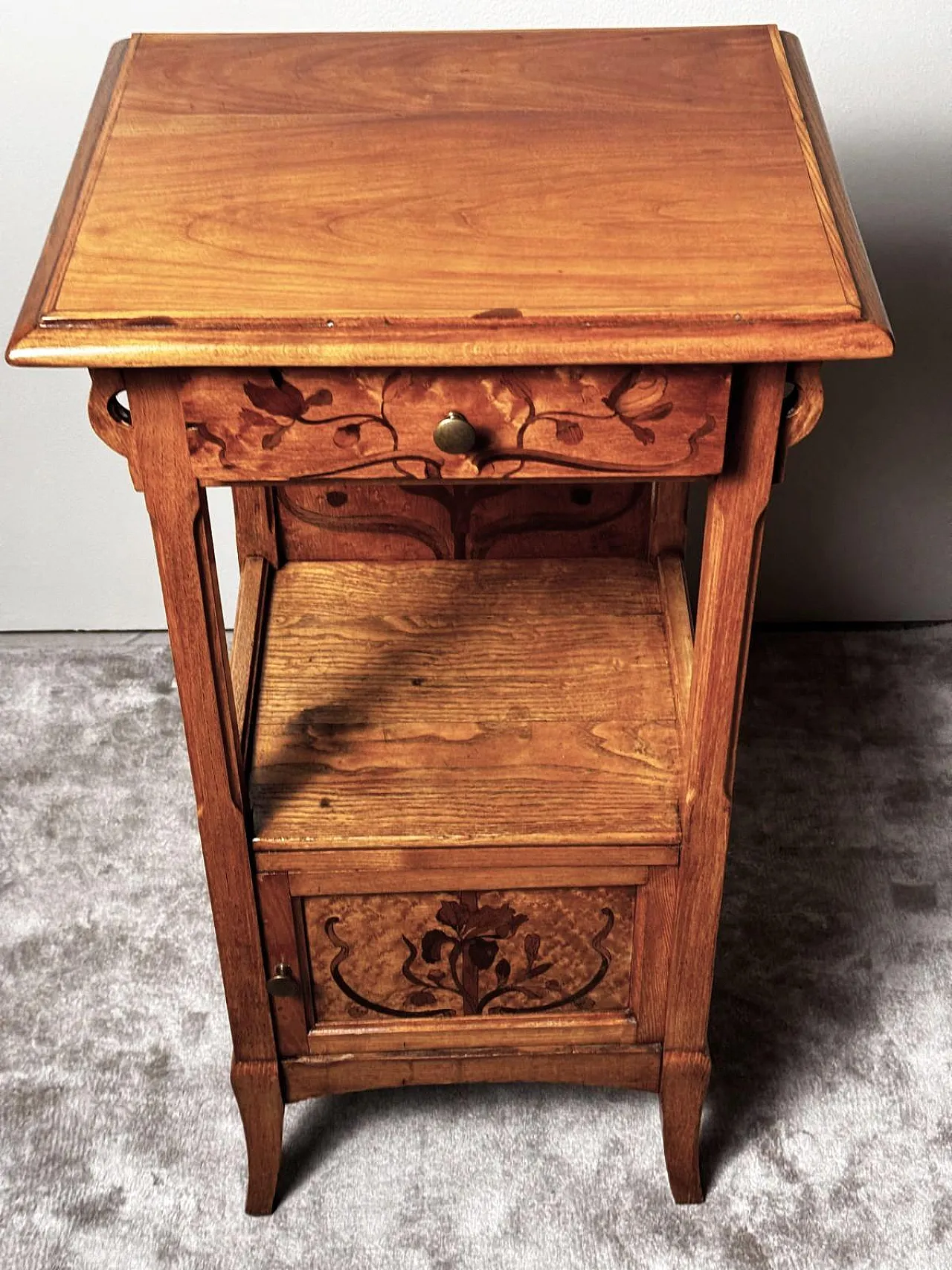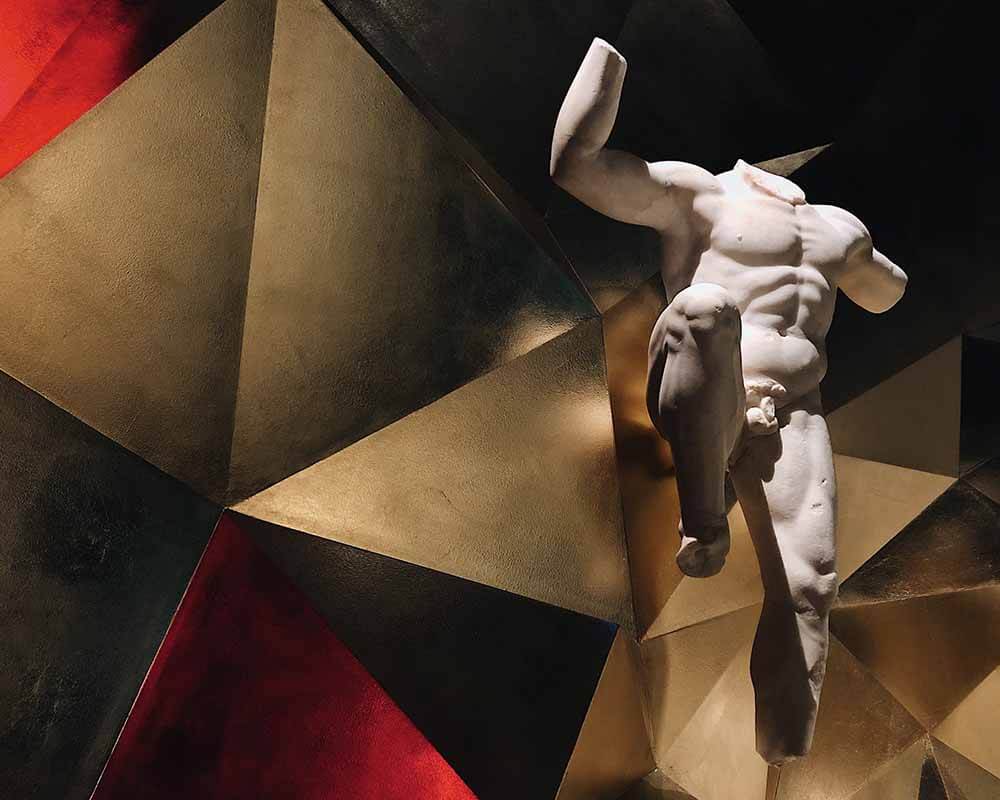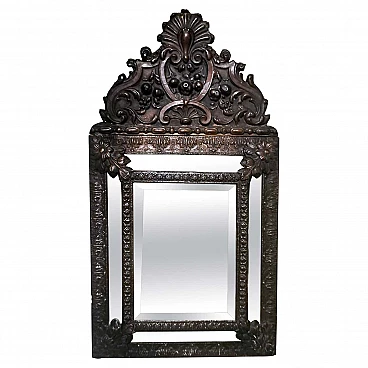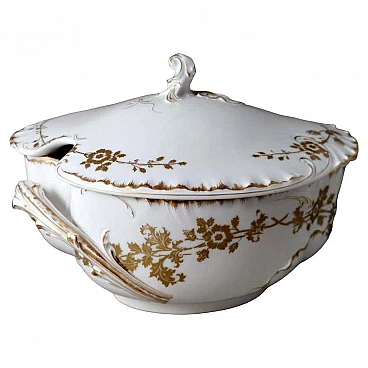This exquisite nightstand, crafted by the renowned Art Nouveau master Émile Gallé, stands as a rare and valuable testament to his exceptional skill in cabinetmaking. Constructed with meticulous attention to detail, this piece features a solid walnut frame, while the drawer front, central panel, and lower door are adorned with birdseye maple “lastronatura”. The nightstand is further embellished with intricate floral inlays, showcasing the unparalleled artistry synonymous with Gallé’s work. These inlays, depicting graceful flowers and sinuous stems, appear to dance across the surface, celebrating the beauty of nature and encapsulating the essence of Art Nouveau: the harmony between art and the natural world. The design is rich in intricate details and subtle nuances, underscoring Gallé's extraordinary talent for combining different wood species to create sophisticated color contrasts. The inlays, crafted with painstaking precision and using softwoods from fruit trees, feature raised contours—possibly enhanced with a specialized finish like a stain or varnish to emphasize their form. The artist's signature (visible in the photos) can be found at the bottom right of the central panel. The nightstand includes an upper drawer and a lower compartment with a door, balancing practicality and elegance for daily use. The finely contoured legs and gently curved profile add a touch of sophistication and lend the piece an air of lightness, characteristic of Gallé’s furniture. This item can be attributed to Gallé’s peak period of cabinetmaking, spanning from 1884 to the early 1900s, during which he produced elaborately designed works with naturalistic themes and a strong artistic focus. It is likely that this nightstand was made in the last two decades of the 19th century or the early years of the 20th century. Émile Gallé (1846–1904) was one of the foremost French designers of the Art Nouveau period. His career gained momentum after receiving high praise at the 1878 Universal Exhibition in Paris. A decade later, following another successful display at the 1889 Universal Exposition in Paris, Gallé achieved international acclaim. His style, with a strong emphasis on naturalism and floral motifs, became emblematic of the emerging Art Nouveau movement. In 1901, alongside Victor Prouvé, Louis Majorelle, Antonin Daum, and Eugène Vallin, he founded the École de Nancy (School of Nancy). Many of Gallé’s masterpieces are preserved at the Musée de l'École de Nancy. Birdseye maple is distinguished by its unique grain pattern, which features tiny, swirling figures that resemble eyes. This rare pattern cannot be artificially replicated, making each piece unique and highly prized. Lastronatura (an Italian term that does not have a direct English translation and is markedly different from “wood veneer”) is a traditional technique that gained popularity as early as the 16th century and remained largely unchanged until the mid-19th century, before the advent of the Industrial Revolution. This method involved hand-sawing logs of precious woods (such as walnut, mahogany, burl, or feathered wood) into sheets measuring between 2 to 6 millimeters in thickness, which were then applied to furniture for decorative purposes. The finishing process was intricate and required significant craftsmanship. "Lastronatura" should not be confused with modern veneer, where the wood is machine-cut to a thickness of less than 1 millimeter, unlike lastronatura, which maintains a thickness between 3 to 6 millimeters. This piece, with its timeless design and flawless craftsmanship, is more than just furniture—it is a work of art that will enhance any setting. Ideal for collectors and enthusiasts of vintage design, this nightstand is an investment in style and elegance, as well as a part of French decorative art history. With its timeless appeal and exceptional artisan quality, it is sure to become the focal point of any space, evoking the elegance and passion for art characteristic of Art Nouveau masterpieces. The nightstand has been fully restored and shows only minor signs of age. Measurements: Width: 44 cm, Depth: 35 cm, Height: 81 cm.





















 SILVER Seller in Prato, Italy
SILVER Seller in Prato, Italy






.png)































